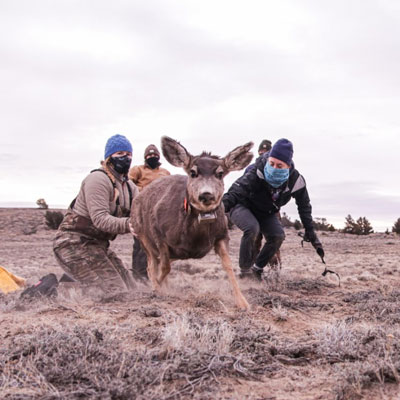Leo Khasoha - Pathways to abundance-occupancy relationships: a mechanistic test of the resource breadth hypothesis
Leo Khasona
Biodiversity Graduate Student Research Enhancement Grant Awardee
Department of Zoology and Physiology
Graduate Advisor: Jacob Goheen
About the Project
Have you ever wondered why some species are abundant and widespread, while others are rare and occur in only a few places? This macroecological pattern—known as the abundanceoccupancy relationship (AOR)—is among the most general in all of ecology. From North American songbirds to helminth parasites, widely distributed species tend to be common where they occur, while those with restricted distributions tend to be locally rare. Because AORs have been noted across a diversity of taxa, geographic locales, and sampling regimes, this macroecological pattern begs for a mechanistic explanation.
Abundance-occupancy relationships have been prominently attributed to two distinct (but not necessarily exclusive) processes. First, Hanski proposed that differences among species in their abilities to move through the landscape should significantly boost the local abundances of “core” species (i.e., those that are abundant and widespread), but should lead to frequent local extinctions and lack of recolonization of “satellite” species (i.e., those that are rare and restricted). Second, Brown hypothesized that differences in diet flexibility among species underlie AORs: species that are able to use a broad array of foods should occur at more sites and be relatively abundant where they occur, while those that are more selective should be relatively rare at the few sites where they occur.
I ask the question: how do responses in the diet, abundance, and occupancy of common, widespread species differ from those of rare, restricted species when food availability changes? I will test two predictions under the Resource Breadth hypothesis; prediction 1: rare and restricted species are more selective in their diets than abundant and widespread species, thus requiring one or few specific foods to persist, and prediction 2: abundant and widespread species have flexible diets and thus can persist in the absence of preferred foods.
Share This Page

Research Highlights




